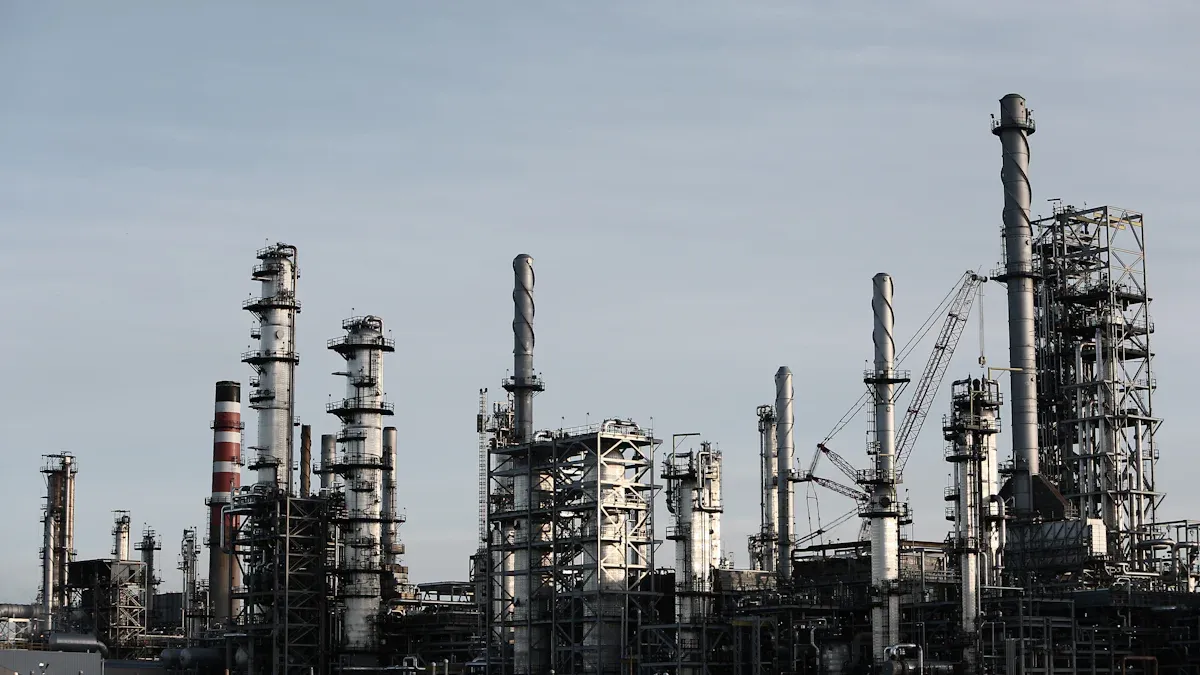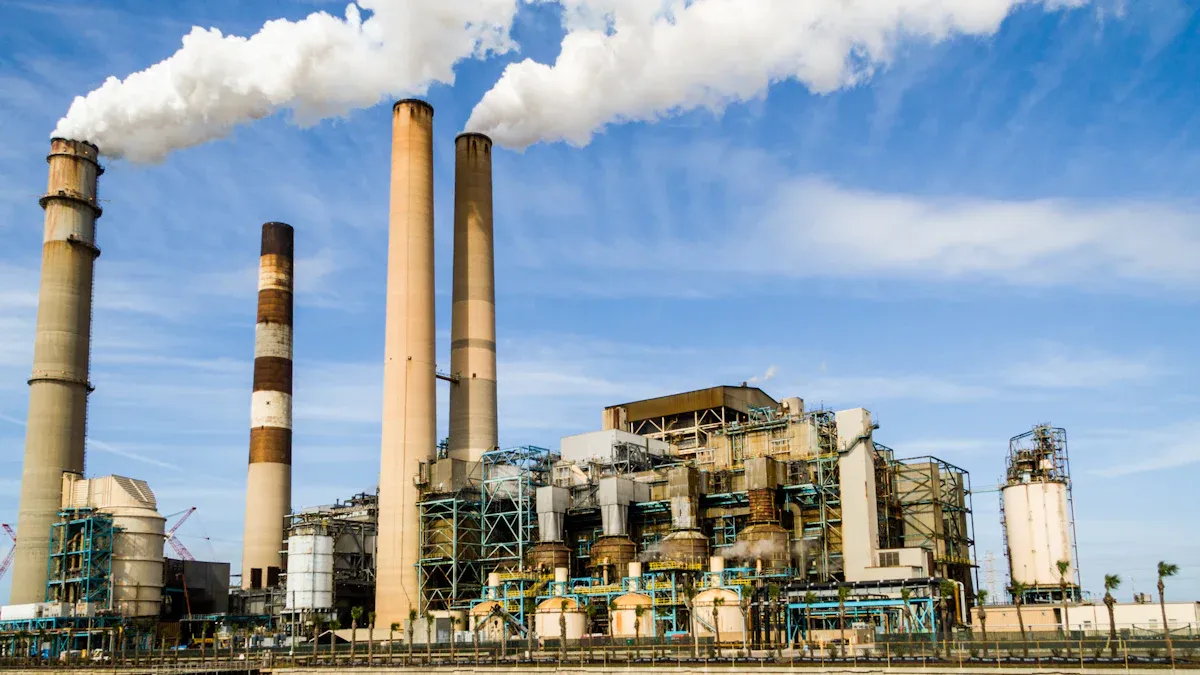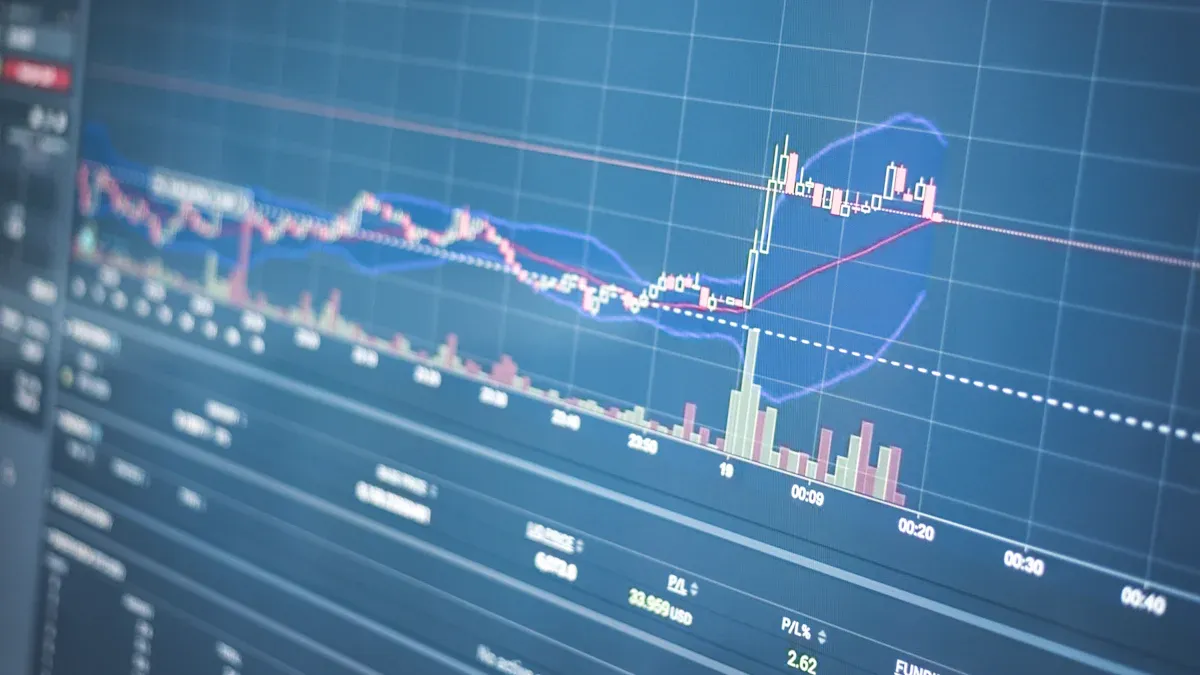
The manufacturing of silicon wafer faces significant economic challenges in 2025. Rising costs, driven by inflation and raw material price volatility, are reshaping the silicon wafer production process. Supply chain disruptions, influenced by geopolitical tensions and trade restrictions, further complicate operations. Meanwhile, sustainability efforts demand decarbonization, pushing every silicon wafer factory to adopt greener practices. These trends highlight the evolving dynamics for every silicon wafer company navigating this competitive landscape.
Key Takeaways
- Rising inflation is making silicon wafers more expensive to produce. Prices might go up 25% by 2025. Companies should find ways to save money and try new ideas to stay ahead.
- Problems between countries and trade rules make getting materials harder. Working with more suppliers and teaming up locally can reduce risks and keep materials flowing.
- Being eco-friendly is very important in making silicon wafers. Using greener methods helps companies follow rules and stand out in the market.
Economic Trends Shaping the Manufacturing of Silicon Wafer

Inflation and Rising Costs in 2025
Inflation continues to exert pressure on the manufacturing of silicon wafer, with production costs expected to rise significantly by 2025. The price of silicon wafers is projected to increase by 25%, driven by heightened demand and global economic disruptions. Rising utility costs, including water and electricity, further compound the financial strain on manufacturers. Historical data reveals that inflation has consistently impacted wafer prices, with global events often triggering supply chain disruptions.
The growing demand for electronic devices, electric vehicles, and advanced technologies like AI and IoT intensifies the need for high-quality silicon wafers. These trends, coupled with the expansion of 5G technology, push manufacturers to innovate while managing escalating costs.
Geopolitical Tensions and Trade Barriers
Geopolitical tensions have reshaped the global trade landscape, creating significant challenges for the manufacturing of silicon wafer. Between 2010 and 2021, China increased its imports of high-purity silicon by 111%, while its exports rose by 24%. In contrast, the United States experienced a sharp decline in trade, with imports dropping by 98% and exports by 18%. These shifts highlight the growing reliance on regional supply chains and the impact of trade restrictions on global markets.
Manufacturers must navigate these barriers while ensuring a steady supply of raw materials. Diversifying sourcing strategies and fostering regional partnerships have become critical to mitigating risks associated with geopolitical uncertainties.
Decarbonization and Sustainability in Manufacturing
Sustainability has emerged as a central focus in the manufacturing of silicon wafer. Decarbonization efforts require manufacturers to adopt greener practices, such as utilizing renewable energy sources and optimizing production processes. These initiatives not only reduce carbon footprints but also align with global environmental regulations.
The push for sustainability stems from the increasing demand for eco-friendly products across industries. As electric vehicles and renewable energy technologies gain traction, manufacturers must balance environmental goals with cost efficiency. Companies that prioritize sustainability stand to gain a competitive edge in this evolving market.
Key Cost Drivers in Manufacturing of Silicon Wafer
Raw Material Price Volatility
The manufacturing of silicon wafer heavily depends on raw materials like high-purity silicon. However, the prices of these materials often fluctuate due to global events and market dynamics.
Disrupting events such as the COVID-19 pandemic, the war in Ukraine, and rising commercial tensions with China can lead to volatility in its price. This is strongly affecting companies across many sectors, including semiconductor manufacturing.
Such volatility creates uncertainty for manufacturers, forcing them to adopt flexible procurement strategies. Companies often secure long-term contracts or diversify suppliers to mitigate risks. Despite these efforts, unpredictable price changes remain a significant challenge, impacting production costs and profit margins.
Energy and Utility Costs
Energy and utility expenses represent another critical cost driver in the manufacturing of silicon wafer. The production process consumes vast amounts of electricity and water. Manufacturing facilities typically use two to four million gallons of water daily. Rising utility costs directly increase production expenses, which ultimately affects wafer pricing.
The growing demand for silicon wafers exacerbates this issue. Manufacturers must prioritize output to meet market needs, even if it means higher utility consumption. This trend underscores the importance of energy-efficient technologies and sustainable practices to control costs while maintaining production levels.
Technological Innovations and Their Impact on Costs
Technological advancements play a dual role in the manufacturing of silicon wafer. While innovations often require significant capital investment, they also pave the way for long-term cost reductions.
| Factor | Description |
|---|---|
| Capital Expenditure | New technologies and larger wafer sizes require costly upgrades, impacting short-term costs but aiming to reduce long-term expenses. |
| Production Delays | Increased demand can lead to supply constraints, resulting in higher prices. |
| Quality and Specification | Growing demand for high-specification wafers raises prices, creating a divide between standard and premium products. |
| Economies of Scale | High-volume production can lower the cost per unit if yield rates are maintained. |
| Market Dynamics | Competitive forces and geopolitical influences also affect wafer pricing, alongside supply-demand economics. |
The semiconductor industry demonstrates how collaboration and innovation can reduce production costs. For instance, the rapid deployment of silicon photovoltaic (PV) technology has improved efficiency, lowering costs while promoting sustainability. These advancements highlight the importance of balancing technological investments with cost management strategies.
Role of Government Policies in Silicon Wafer Manufacturing
Subsidies and Incentives for Semiconductor Production
Government subsidies and incentives play a pivotal role in shaping the manufacturing of silicon wafer. Policies like the CHIPS and Science Act of 2022 have allocated substantial resources to bolster domestic semiconductor production.
- The act provides approximately $52 billion for research and manufacturing within the semiconductor industry.
- It includes a 25% investment tax credit for eligible capital expenditures, reducing financial burdens for manufacturers.
- Between 2021 and 2023, state and local governments offered $13.2 billion in incentives to attract semiconductor investments.
These measures aim to enhance global competitiveness and reduce reliance on foreign supply chains. Additionally, subsidies have accelerated the adoption of solar cells, further integrating silicon wafers into renewable energy technologies. By lowering financial barriers, these initiatives encourage innovation and expansion in the sector.
Environmental Regulations and Compliance Costs
Environmental regulations significantly influence the manufacturing of silicon wafer. Governments worldwide enforce strict compliance standards to minimize the environmental impact of production processes. These regulations often require manufacturers to adopt cleaner technologies and reduce emissions.
Compliance costs, however, can be substantial. Companies must invest in advanced equipment and sustainable practices to meet regulatory requirements. While these measures increase short-term expenses, they align with global efforts to combat climate change. Manufacturers that prioritize environmental compliance not only avoid penalties but also gain a competitive edge by appealing to eco-conscious markets.
Tax Benefits and Regional Manufacturing Growth
Tax incentives have become a cornerstone of regional manufacturing growth. Policies offering tax credits and deductions attract investments in semiconductor facilities. For instance, the CHIPS Act provides a 25% tax credit for capital investments, encouraging companies to establish or expand operations domestically.
Regions offering favorable tax policies often experience significant economic growth. These areas benefit from job creation, infrastructure development, and increased technological innovation. By fostering a supportive environment, governments enable the semiconductor industry to thrive while strengthening local economies.
Market Dynamics and Supply Chain Challenges in 2025

Demand Growth in the Semiconductor Industry
The semiconductor industry is experiencing unprecedented demand growth, driven by advancements in artificial intelligence (AI), high-performance computing (HPC), and the Internet of Things (IoT). These technologies require increasingly sophisticated chips, fueling the need for high-quality silicon wafers.
- AI and HPC applications are projected to grow by over 15% in 2025, significantly influencing semiconductor demand.
- IoT devices continue to expand, necessitating efficient and compact semiconductor solutions.
- Delays in fab production, caused by geopolitical events and rising costs, further impact supply dynamics.
| Key Drivers | Description |
|---|---|
| AI and HPC Growth | The demand for AI and HPC technologies is expected to rise sharply. |
| Data Center Demand | Increasing reliance on data centers drives the need for advanced chips. |
| Supply Chain Impact | Constraints in supply chains shape the trajectory of semiconductor demand. |
The global semiconductor market is forecasted to grow by 15% in 2025, with memory segments like high-bandwidth memory (HBM) seeing a 24% increase due to AI workloads. This growth underscores the critical role of silicon wafer manufacturing in meeting industry needs.
Global Supply Chain Disruptions
Supply chain disruptions remain a significant challenge for the manufacturing of silicon wafer. Geopolitical tensions, trade restrictions, and armed conflicts have created bottlenecks in the global supply chain.
- Trade restrictions and tariffs hinder the smooth flow of raw materials.
- The industry’s reliance on a few major players makes it vulnerable to shortages.
- Wafer prices are expected to rise by up to 25% in 2025, reflecting market volatility.
| Challenge | Description |
|---|---|
| Geopolitics | Trade barriers and conflicts disrupt the supply chain. |
| Wafer Shortage | Limited production capacity leads to significant shortages in the market. |
These disruptions emphasize the need for manufacturers to adopt resilient strategies, such as diversifying suppliers and investing in regional production facilities.
Inventory Management and Production Strategies
Effective inventory management has become essential for navigating supply chain challenges in the semiconductor industry. Traditional practices, like just-in-time inventory, often fail during disruptions, leading to inefficiencies.
- Agile inventory strategies help manufacturers maintain competitiveness.
- Diversified supplier networks reduce dependency on single sources.
- Dynamic inventory models enhance responsiveness to market fluctuations.
The shift towards larger wafer sizes, such as 300mm and 450mm, also improves economies of scale, reducing costs and increasing production efficiency. Manufacturers must prioritize innovation and operational excellence to address the complexities of silicon wafer production while meeting growing demand.
The manufacturing of silicon wafer faces challenges shaped by economic trends, including inflation, sustainability, and supply chain complexities. Strategic cost management relies on insights like processing efficiency and yield optimization.
| Parameter | Description |
|---|---|
| Processing time per wafer | Time taken to process each wafer, affecting costs |
| Material utilization efficiency | Efficiency in using materials, impacting waste |
| Equipment depreciation | Cost associated with the wear and tear of equipment |
| Yield loss factors | Factors leading to loss in production yield |
Future growth depends on balancing technological investments with sustainability. Long-term forecasts highlight opportunities for innovation and market expansion. Ningbo VET Energy Technology Co. exemplifies leadership in addressing these challenges, setting benchmarks for efficiency and environmental responsibility.
📈 Note: Manufacturers must adapt to evolving market dynamics to remain competitive while meeting global demand.
FAQ
What are the main economic trends impacting silicon wafer manufacturing in 2025?
Inflation, geopolitical tensions, and sustainability efforts are the primary trends. These factors influence costs, supply chains, and production strategies across the semiconductor industry.
How does sustainability affect silicon wafer production?
Sustainability drives manufacturers to adopt renewable energy, reduce emissions, and optimize processes. These efforts align with environmental regulations and improve market competitiveness.
Why is raw material price volatility a challenge for manufacturers?
Fluctuating prices of high-purity silicon create uncertainty. Manufacturers must adopt flexible procurement strategies to manage costs and maintain production efficiency.






